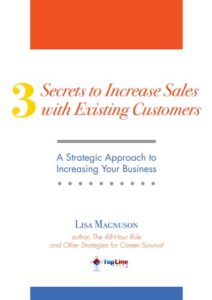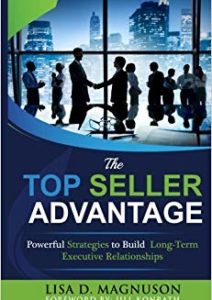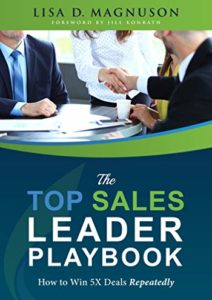It’s not sexy. It’s not trending on anyone’s network or deserving of a #hashtag. It’s one of those topics that no one (especially sales people or their managers) really want to spend any time talking about. It doesn’t have the star-quality appeal or attention-grabbing calls-to-action such as headliners like:
- Improve your Close Ratios NOW by 20% or More
- Double you Sales in 90 Days – Guaranteed
- Learn what makes Executives Say YES to your Meeting
Well, before I disclose the subject of this article, I will say that there is definitely a connection between my topic today and the three rather confident promises above. The connection is straightforward, foundational, yet surely transformational. Okay, with my arm twisted, the subject that no one wants to bring to the strategy table is customer research – and I’m talking about effective, purposeful, but most importantly, impactful research.
In my experience, most salespeople treat research as a last-minute, last-ditch, least-productive thing to do before making those sales calls. This half-hearted research usually includes a cursory visit to the company website to gain a general overview of the organization. It might also include a quick look at LinkedIn® to grab a few highlights or all-purpose talking points. However, when it comes to improving the sales conversation (not to mention relationship-building), the process of gathering insights must be far more deliberate and focused. This leads to the inevitable questions:
- What research?
- How much depth is important?
- How should the information be utilized?
In most cases, the tried-and-true answers are found in ‘The Goldilocks Principle’. In other words, not too much, not too little, but just right.
It’s also important to know where you’re going and what your endgame is. This methodology means that you start with the data, which becomes the key information moving you toward acquiring the intelligence. This intelligence is the crucial element that is finally transformed into insight.
How do you go from data to insight? Use the Collect, Filter, Organize and Apply approach and you can be confident that your revenue generation will be a far more than just a fairy tale.
Collect (Data)
The collection phase includes gathering as much data as possible. Obviously, the internet has made this process not only easy but quite effective. The goal of this phase is to collect any and all data that will help you determine, and ultimately influence, the most vital issues or concerns your prospect or customer may have, both in terms of internal and external business drivers.
During this phase, it is imperative that you check as many sources as possible, especially for verification, accuracy, and timeliness. It makes no sense to come to the table with information or options that are no longer relevant to the prospect’s current business model.
Focus Areas for Data Collection
- Company Goals
- Company Priorities
- Company Objectives
- Company Initiatives (News articles are the best place to learn more.)
- Challenges (Annual report letter to shareholders is a good place to learn more.)
- Competitors (an Annual report is a good source.)
- Markets (an Annual report is a good place to learn more.)
- Customers (an Annual report is a good place to learn more.)
- Trends – industry and financial
- Company news (Web sites usually publish this information.)
- Industry news
- Vision, mission, values
- Financials (Annual reports or other financial reporting are good places to learn more.)
- Executive background including interests, affiliations, characteristics (Past history with the company, referral partners, professional bios or LinkedIn are good sources.)
- History (Check your companies CRM notes if available.)
In other words, what is important to them?
Organize (Information)
The organizing phase is when you begin to process the wild array of data you have collected by turning it into usable information. Your goal is to carefully sift through the noise for the specific details that will be truly important for your strategy and actually assist you in your sales efforts. Consider the overall fit for your products and services. Take notice of any trends or emerging opportunities you can impact. As yourself, have you had successes with similar situations which could be replicated? Are there areas of commonality or alignment between your company and theirs? These offer great possibilities for sharing or benchmarking best practices. It’s helpful to organize your information into three areas: high-level intel, mid-level intel, and immediate level intel. By organizing your information in this way, you know that you’re thinking broadly.
Filter (Intelligence)
The filtered phase is the core of any effective research process. In this phase, you are going to filter your organized information so that it can be easily shared with others. The goal of this step is to determine the most significant insights.
Examples include:
TOP priorities – It is great to know what resources have been allocated to existing programs and priorities. Priorities could include any current goals, projects, or initiatives. Can you determine where the most time, money, resources, investments, and mindshare are spent? How will the organization or executive measure progress? How will they know when they’re successful? Can you uncover the ‘gap’ between where they are today and where they would like to be?
TOP obstacles – If you are clear on the priorities, then turn your attention to those elements that could be standing in the way of success. You want to understand what is most important to the executive being called on. Obstacles could be market conditions, competition, funding, timing, etc. If your products or services can address these potential hurdles, then you have the basis for an impactful conversation.
Apply (Insights)
Finally, it is time to apply all that you have learned. You will now use your intelligence to develop or cultivate your insights, and these insights become the basis for your sales conversations. This step may seem daunting at first, but this is where you call on your resources. Gather your account team, sales manager, partners, and even your marketing department. Together this group can turn its focused intelligence into impactful insights. Once you have your fresh insights, you’re more than ready to engage your customer.
Well, it may not be the hottest topic around the water-cooler, but following a logical path to your research will enable you to put your best (and most informed) foot forward in each and every sales call. And that will make you a star in your customer’s eyes.














Comments